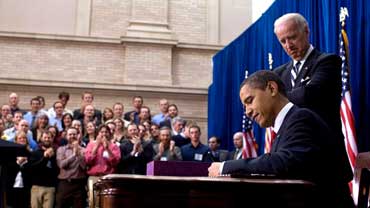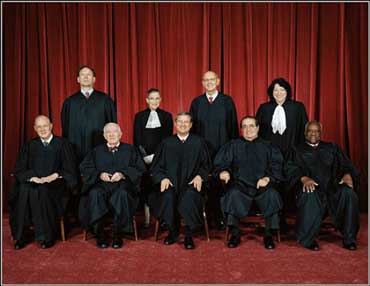


The U.S. government is divided into three parts. These three parts are called the three branches.
The three branches of government are: (1) legislative, (2) executive, and (3) judicial.
Congress is the head of the legislative branch. It meets in the Capitol Building.
Congress includes both the Senate and the House of Representatives. It is bicameral, which means it has two parts.

The President is the head of the executive branch.
The President works and lives in the White House.
Presidents and their families are protected by the Secret Service.

The Supreme Court is the head of the judicial branch. It meets in the Supreme Court Building.
There are nine Supreme Court Justices.
The U.S. Constitution grants powers to each of the three branches of government.
A system of "checks and balances" limits the powers of each branch.
The powers given to each branch of government overlap.
The Press (newspapers, radio, TV, and the Internet) is often called the fourth branch of government. This is an unofficial title and it isn't mentioned in the U.S. Constitution.
The Capitol, the White House, and the Supreme Court Building are all located in Washington, D.C.
CIVICS FACTS
1. Most democracies in the world are divided into two or more branches.
2. Article I, Section I, of the U.S. Constitution gives Congress those "legislative powers herein granted". These powers are listed in Article I, Section 8.
3. The Constitution does not mention Congressional Committies, but they are a powerful part of Congress.
4. The White House is both the president's home and office.
5. The Supreme Court met in many different locations until 1935 when the Supreme Court Building was built.
Civics Quiz Questions
1. Name the three branches of the U.S. Government.
2. Who is the head of the executive branch?
3. What group is the head of the judical branch?
4. What legislative body is the head of the legislative branch?
5. What does "checks and balances" mean?